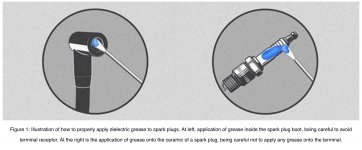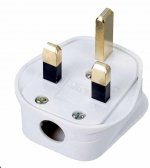Recently My LS-130 had low, pulsing cavitation action. I was able to get it to perform better with a different plug-it but it seemed like it had a similar problem with strain on the cord A third seemed to have no apparent issue. The first cord was dedicated to the extractor hose so it made sence it might be worn and faulty; it also had a toasted look on one of the socket terminals. The other cord had no where near as much use and was mildly discolored on one side; it was howerver off my OS 400 and Its been in some challenging situations, so again could be the cord. But then the thir, a unused plug it is now having problems!
I may have seen this already; my RO125 actually melted down after cavitating and when I got it back it back from festool the first time I went to use it, it was acting faulty with multiple cords. I believe I tested it with no problem but when it had the persistent fluctuation in Power I sent it back to festool and they sent it right back saying normal function. And then it worked fine for me too, using the same plug it cords!
Then, recently I was about to box the RO125 up after ~20 hrs of use when my LS-130 clued me in my plugit might be the culpret. I tested it with the unused plug-it and it seemed fine which was more evidence my cord or cords were the problem. But now I thin the LS-130 has incfected the new cord and I am about to change the socket on the tool but Id like to understtand whats going on.
I tested all of my cords for continuity and they all registered about the same. Also I tried cleaning up all the connections which usually fixes odd electrical mysteries.
I dont want to just throw money away buying parts if it is unnecessary or worse, doesent fix the problems. So who can describe whats going on with the plug-it mystery? How to know weather to replace the cord or the tool socket or both and which tools how often? Et cetera. Is there a diagnostic strategy to find the fault before it gets worse, to prevent or anticiapate a fault? IF there is a fault, where is the fault and what is the official recomendation?
One more thing. I used a product called DEox-it on my connections and I am wondeing if this was a bad idea somehow. I assumed it was fine , I also would assume its fine to use synthetic dialectic grease or OXguard on the recepticle connectors as well. Any thoughts on this?
I have enjoyed my festools very much. They have proved to allow for more precise work and are fairly durable but electrically they are tempermental. I have sent my TS-55 in twice, for problems involving sparks, heat and melted plastic, et cetera; and I use it infrequently. Maybe long custs to demo strata of wood flooring with the stock blade was too hard for it even though the dust control aspect made sence. Perhaps the Panther rip tooth blade I used for ganged up 3/4" melamine was wrong too. I stopped my cut but finished them individually because the saw seemed strained and it fried next time, on soft pine and 1/4 ply. Now, its the Rotex and my LS-130, or plugits, or both, or neither. Please, any feedback is appreciated!
I may have seen this already; my RO125 actually melted down after cavitating and when I got it back it back from festool the first time I went to use it, it was acting faulty with multiple cords. I believe I tested it with no problem but when it had the persistent fluctuation in Power I sent it back to festool and they sent it right back saying normal function. And then it worked fine for me too, using the same plug it cords!
Then, recently I was about to box the RO125 up after ~20 hrs of use when my LS-130 clued me in my plugit might be the culpret. I tested it with the unused plug-it and it seemed fine which was more evidence my cord or cords were the problem. But now I thin the LS-130 has incfected the new cord and I am about to change the socket on the tool but Id like to understtand whats going on.
I tested all of my cords for continuity and they all registered about the same. Also I tried cleaning up all the connections which usually fixes odd electrical mysteries.
I dont want to just throw money away buying parts if it is unnecessary or worse, doesent fix the problems. So who can describe whats going on with the plug-it mystery? How to know weather to replace the cord or the tool socket or both and which tools how often? Et cetera. Is there a diagnostic strategy to find the fault before it gets worse, to prevent or anticiapate a fault? IF there is a fault, where is the fault and what is the official recomendation?
One more thing. I used a product called DEox-it on my connections and I am wondeing if this was a bad idea somehow. I assumed it was fine , I also would assume its fine to use synthetic dialectic grease or OXguard on the recepticle connectors as well. Any thoughts on this?
I have enjoyed my festools very much. They have proved to allow for more precise work and are fairly durable but electrically they are tempermental. I have sent my TS-55 in twice, for problems involving sparks, heat and melted plastic, et cetera; and I use it infrequently. Maybe long custs to demo strata of wood flooring with the stock blade was too hard for it even though the dust control aspect made sence. Perhaps the Panther rip tooth blade I used for ganged up 3/4" melamine was wrong too. I stopped my cut but finished them individually because the saw seemed strained and it fried next time, on soft pine and 1/4 ply. Now, its the Rotex and my LS-130, or plugits, or both, or neither. Please, any feedback is appreciated!


